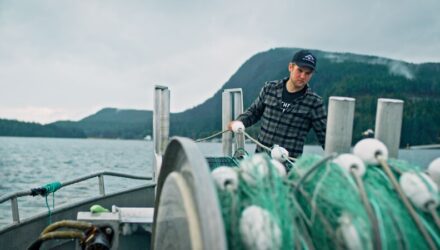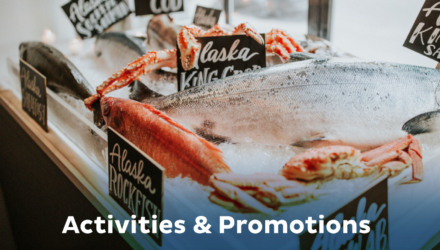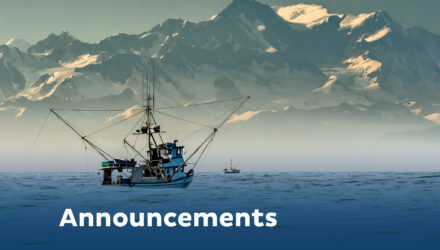Northern Lights: Cruise lines, Alaska seafood and sustainability – a natural connection

Sustainability. It’s more than a buzz word for Alaska’s cruise and seafood industries. It’s a movement – a system that is interconnected with mutual respect so important to us it’s mandated by our state constitution. In Alaska, we brag about our sustainable, wild seafood, and the culture of respect that is uniquely Alaska.
These two industries are inextricably tied to our lives and livelihoods – past, present and future – demanding of themselves and others to operate responsibly. We do it as Alaskans and we expect others visiting our state to follow suit. Some might think it would be difficult to find another industry that could possibly match the level of commitment we have as Alaskans to protect our streams, rivers and oceans where our fish thrive. A surprising group is the cruise sector, one of the most misunderstood industries leading the way in environmental sustainability and embracing sustainable food sourcing – of which Alaska cruising is a model.
Despite the size of some cruise ships, cruise itself is actually a very small part of a larger maritime industry. Cruise ships comprise less than one percent of the global shipping fleet, yet we are at the forefront of research and development, driving innovations from which the entire maritime industry benefits with technologies that protect the environment and the waters on which we all depend.
Cruise Lines International Association (CLIA) is a global trade association representing more than 50 member cruise lines and 250 ships that comprise the vast majority of the world’s ocean-going passenger cruise capacity. We support policies and practices that foster a secure, healthy, and sustainable cruise ship environment. Our cruise lines meet and often exceed stringent national and international environmental laws and regulations and our clear commitment is to make net-zero carbon shipping a reality and to support a brighter, better and more responsible future.
From utilizing alternative fuels, shore power, and state of the art wastewater treatment systems, to LED lighting and the elimination of single-use plastics, the cruise industry is committed to leading the way toward clean air, clean oceans and environmental responsibility. Efforts go beyond what you might expect, to special paints for ship hulls that reduce friction as ships sail, to onboard recycling and biodigesters that reduce food waste.
Sustainability is at the heart of our culture at CLIA and drives what we do each and every day. Beyond our own operations, we seek partnerships with other industries and destinations who share our sustainability goals. For this reason, the marriage between cruise and Alaska seafood is a natural one. We know visitors are more focused than ever on where their food comes from, and Alaska seafood lets us tell a great story and serve a fantastic meal while our passengers enjoy the immense beauty of our state.
Alaska’s fishermen know that wild seafood is one of Alaska’s most precious resources and, with their help, our state goes to great lengths to ensure its continued abundance. Alaska seafood is responsibly managed using a world-leading, science-based approach, which is verified by third-party sustainable seafood certifications like Alaska’s Responsible Fisheries Management (RFM) program to help fish stocks, communities and entire ecosystems thrive for generations to come.
From fishermen and processors to scientists and law-enforcement officials, sustainability is not only crucial to Alaskans’ livelihoods and future, but it’s a deeply ingrained tradition that is important to the cruise industry.
While the major lines that visit Alaska have long partnered with communities, ports and other organizations on sustainable tourism initiatives, cruise has been increasing its purchasing and sourcing of local food, particularly sustainable Alaska seafood. Holland America for instance, is sailing six ships in Alaska this season – and will purchase and serve more than 5,000 pounds of wild Alaska seafood per ship, per cruise. That is more than half a million pounds in the 2022 season alone! As part of their commitment to sustainable sourcing, the cruise company is partnering with the Alaska Seafood Marketing Institute (ASMI) to help tell the stories of the people behind the fish, from the fishermen to the processors and the chefs. In the future, recipe development, and in-destination video content will be featured.
Cruise lines do a fantastic job at incorporating and highlighting Alaska seafood products onboard through educational materials and programs, cooking demonstrations, and other initiatives, while proudly serving guests. Examples include an Alaska grilled fish night at buffet restaurants on Oceania cruises, which feature fresh salmon, halibut and rockfish. Celebrity Cruises features an onboard “crab shack” serving Alaska crab cakes, crab bisque and sides. Regent Seven Seas puts halibut and crab on the menu in Alaska, while Seabourn adds salmon and halibut, including an Alaska smoked salmon timbale. Beyond the ship, shore excursions offer more opportunities to enjoy Alaska seafood such as with Norwegian Cruise Line’s Alaska seafood feast and tribal dance show at Icy Strait Point.
Princess Cruises has teamed up with Alaska Seafood, Pacific Seafood and Alaskan Leader Seafood on a “Wild for Alaska Seafood” program that debuted on six ships sailing Alaska waters this season. Building on its popular “only in Alaska” menus, the program offers 30 Alaska seafood dishes with featured items every night in all main dining rooms. The recipes use multiple varieties of Alaska salmon, Alaska cod (caught by hook and line only), halibut, rockfish, Dungeness crab, spot prawns and razor clams. These are all just a few examples of how cruise is helping guests appreciate the importance of sustainable sourcing and, as a result, expand the growing community of people who respect and understand the critical importance of “managing, protecting, maintaining, improving and extending” Alaska’s fisheries and other natural resources.
Beyond the efforts of individual member lines that bring more than 40 ships to our market, CLIA is working with ASMI to find ways we can strengthen the relationship between the cruise and seafood industries in Alaska. We share the common goal of sustainability and we both work to promote this beautiful state we live in and the immense resources we’re blessed with. Both industries are significant to Alaska — providing jobs and sustaining local economies. The collaborative efforts of our industries expand the positive impacts of Alaska seafood and tourism to a broader range of stakeholders and Alaska seafood enhances visitor enjoyment and tourism businesses throughout the State. As they say, “a rising tide lifts all boats,” and in this case, those are fishing boats and cruise ships.
Renée Limoge Reeve is vice president of government and community relations for Cruise Lines International Association Alaska. She has more than 20 years of experience in government relations and is based in based in Anchorage, Alaska.



